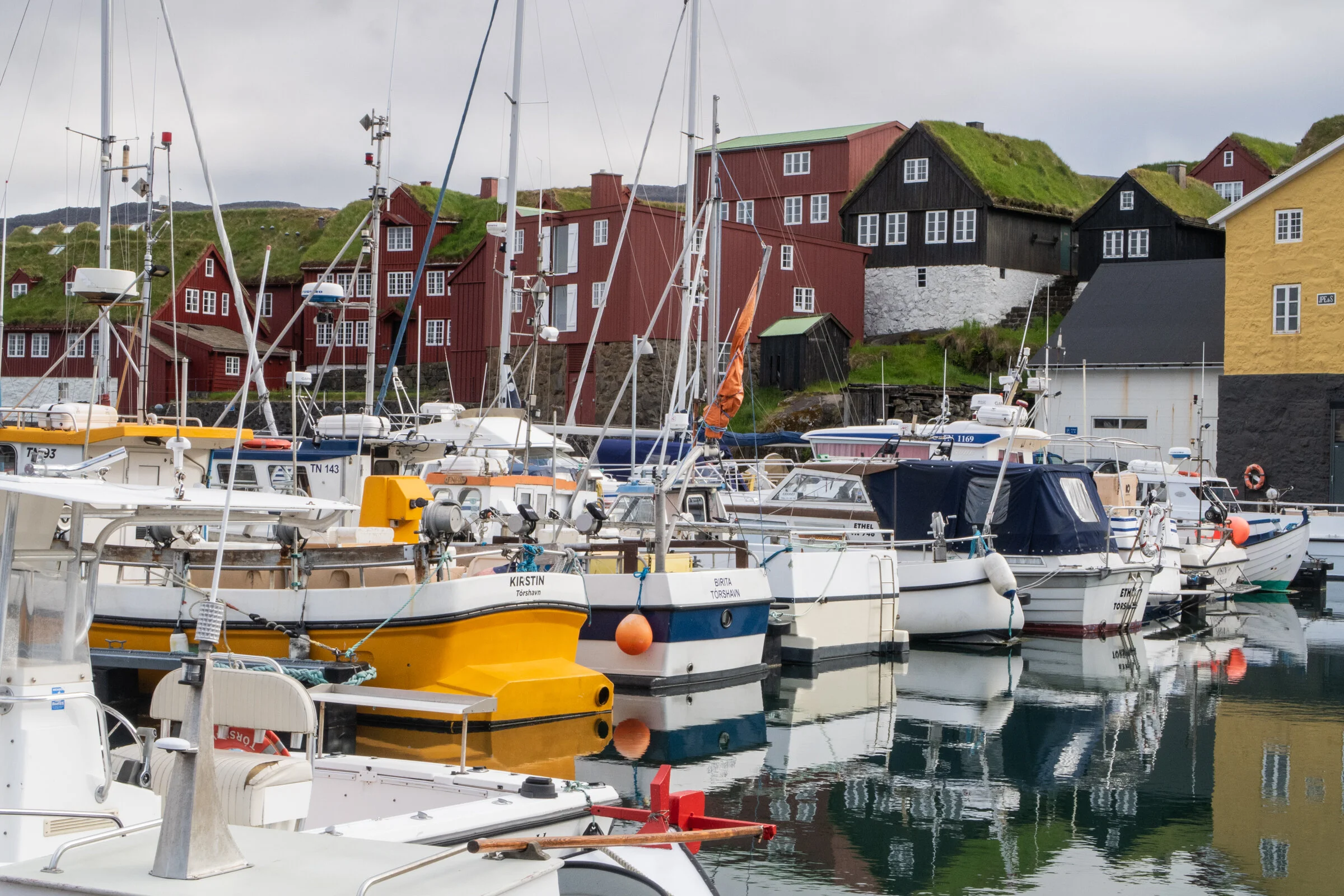High pitched roofs of green turf are a common sight in many Scandinavian countries. In the Faroe Islands, set against a landscape of steeply terraced mountain sides and cloud covered peaks or alongside narrow sea inlets and island shores, they are especially symbolic traditional life, past and present.
A visitor might observe that good turf seems to be in quite short supply in these islands. Where it exists, around farms and villages, it is thanks to improvement of the land by human hands and the grazing of many sheep. It is perhaps surprising then that turf has remained the traditional roofing material for many buildings, from dwellings to barns and fishing sheds and in locations both rural and urban, even in the capital Tórshavn.
In modern times, moulded metal or grey slates have become more popular roofing materials to replace overgrown or threadbare turf. I wonder if it is partly the rise of tourism that has seen a return to fresh growing roofs in picturesque villages and in Tórshavn itself, where they adorn administrative and other buildings in the old parts of the capital and around its modern harbour.
Traditionally the turf was laid on a lining of silver birch bark, left to curl against retaining boards usually painted black. Under these, in coastal villages, fish are still sometimes hung out to dry in the salt winds. Both bark and wood had to be imported, since no trees of any size grow on the steep basalt layered and windswept hillsides.
Nowhere are turf roofs more evident than on the churches, especially those built in the 1800s. These were timber-framed buildings, constructed on a stone base or outcrop of natural rock usually painted white in stark contrast to the black-tarred walls. Fine examples are in Kollafjørdur (1837) on Streymoy and Funningur (1847) on Eysturoy.
Other churches have whitewashed walls of stone or wood and may be roofed with modern materials, as seen beside the harbour on Nólsoy and perched between mountain and sea at Kunoy.
The small stone church at Saksun was built in 1858. This tiny farming settlement is at the end of the road on the NW tip of Streymoy, the largest of the Faroe Islands and is a popular place for a day out, enjoyed by both tourists and Faroese alike. Drawn by the remote location and magnificent scenery, there are also historical farm buildings on what is still a working farm and a museum which demonstrates how some aspects of rural life are little changed since medieval times.
When it was built the church probably had a turf roof but a photograph taken in 1991 by Gunnie Moberg* shows it with a modern roof that appears to be metal. Today, with the traditional turf restored, it blends into the landscape between the soaring peaks and the Pollurin tidal lagoon below.
*Book: The Faroe Islands by Liv Kjørsvik Schei and Gunnie Moberg (1991) John Murray (Publishers) Ltd.




















